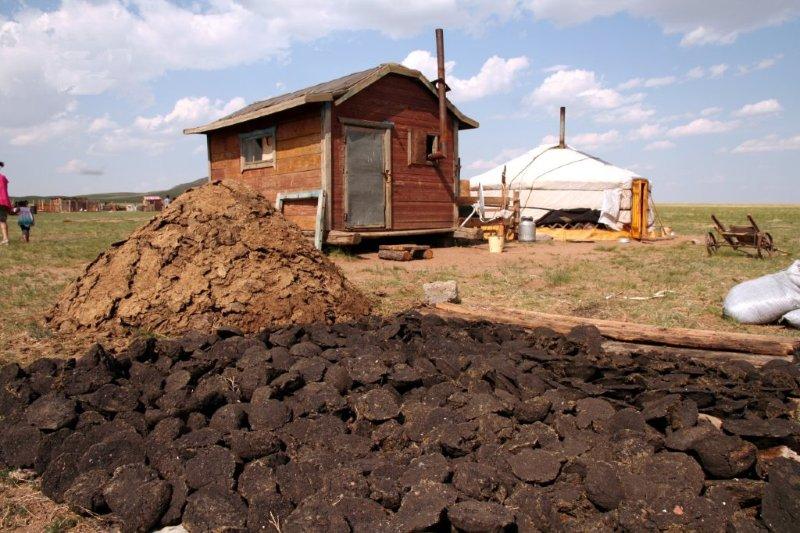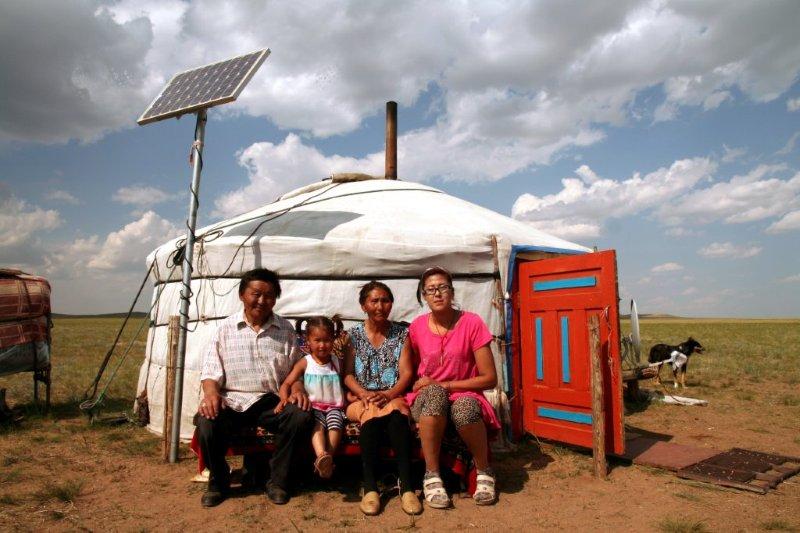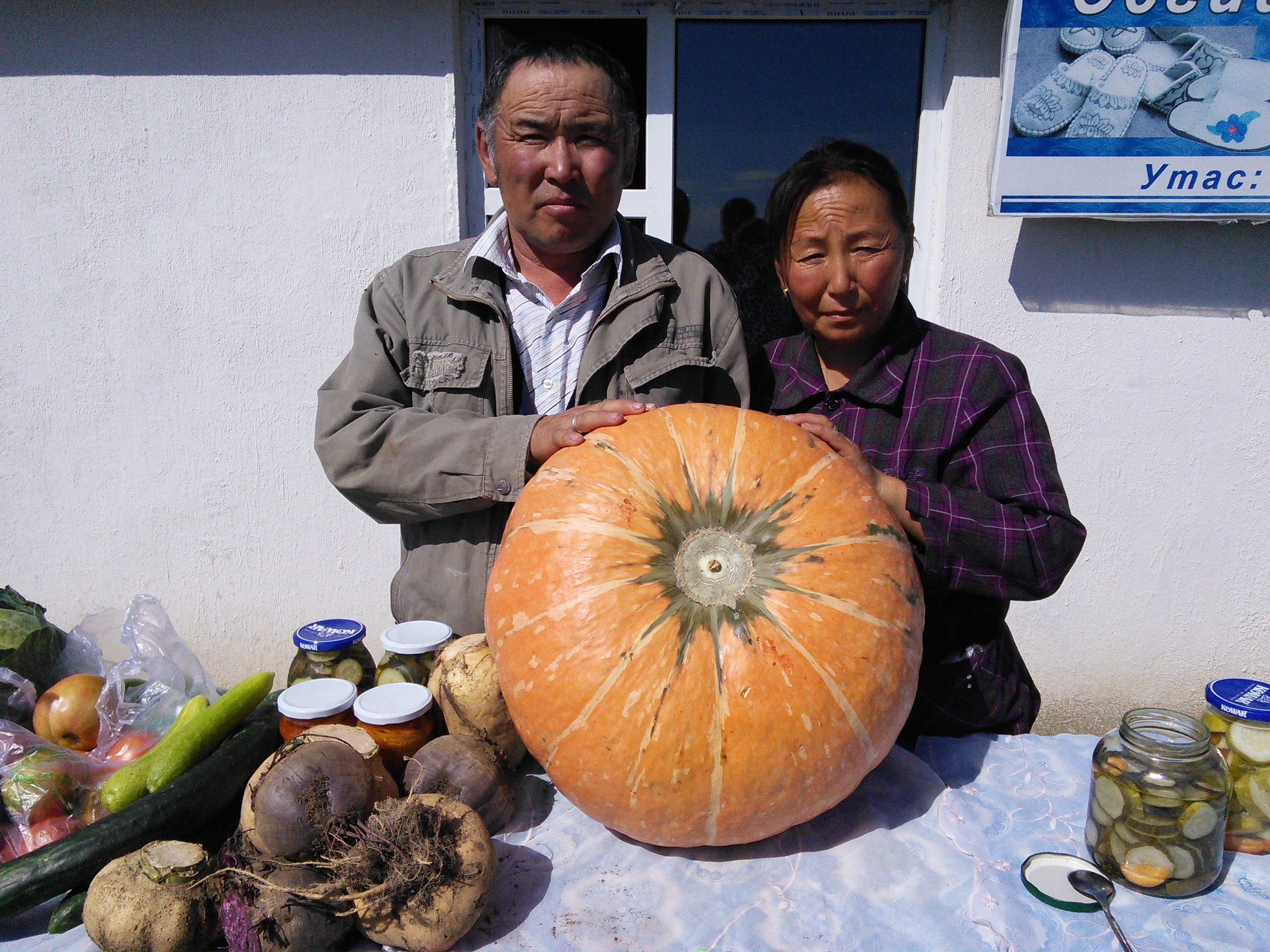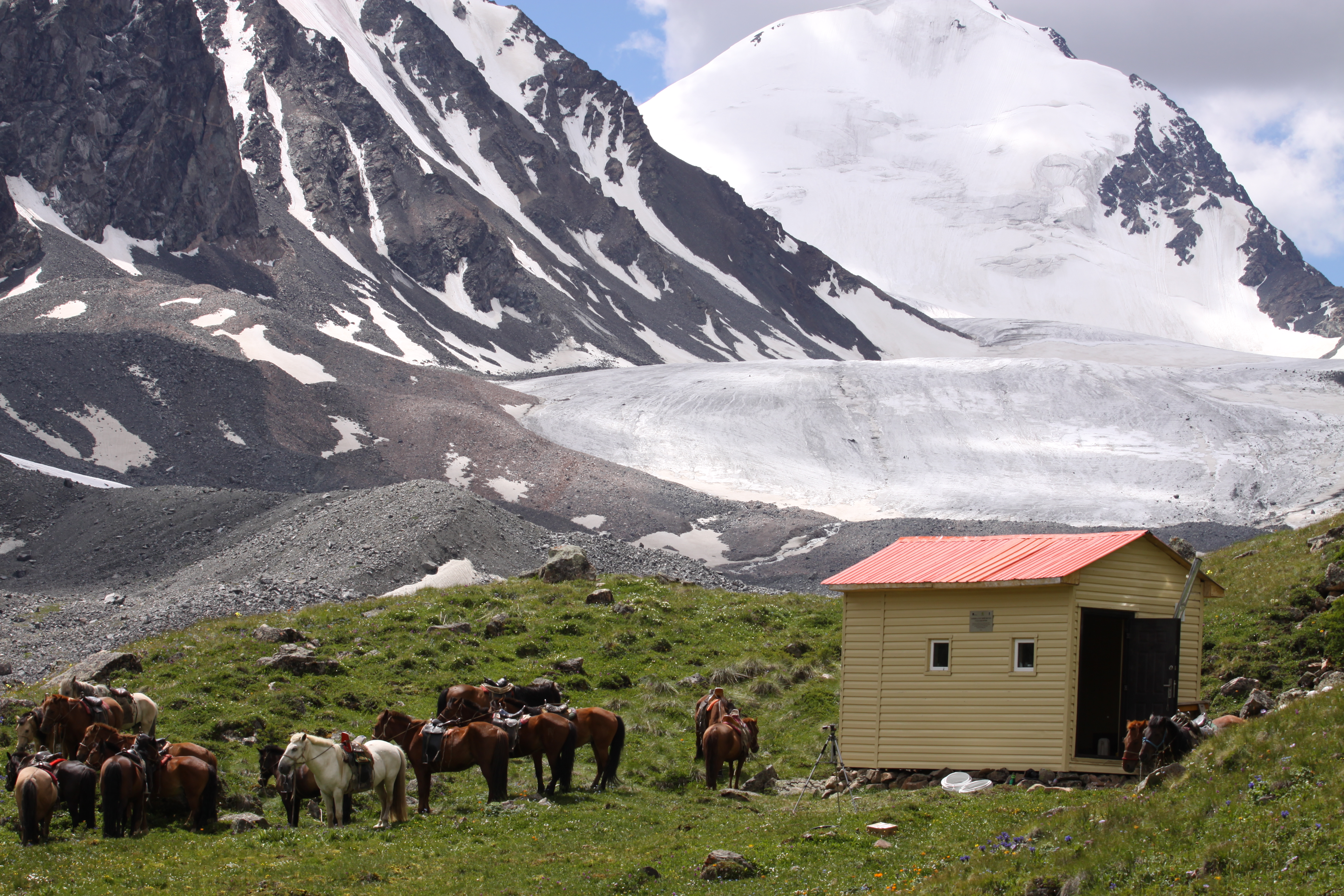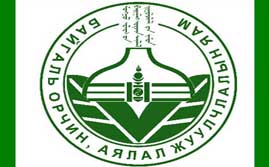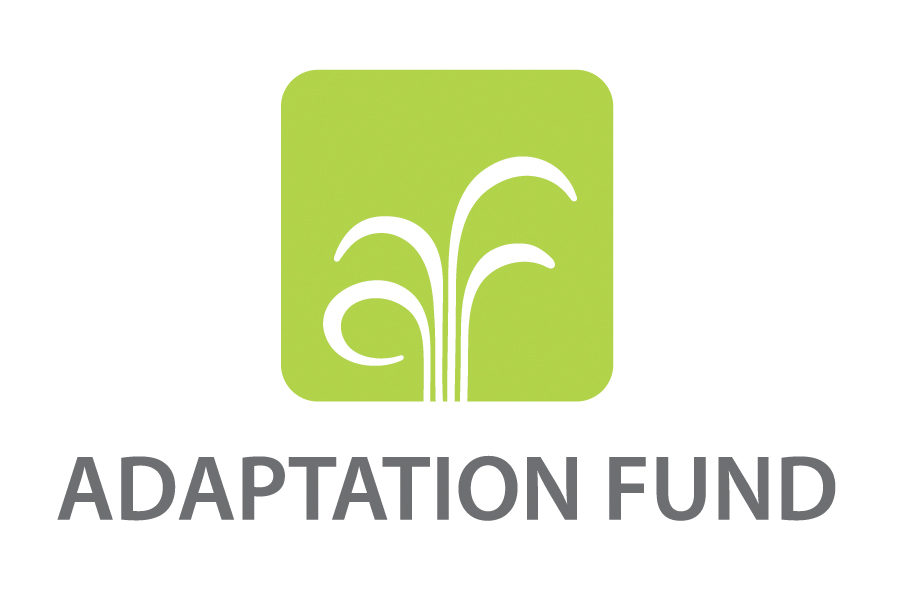Ecosystem-Based Adaptation for Water Security in Mongolia
Project Overview
Mongolia’s geographic location, fragile ecosystems and socio-economic conditions make the country highly vulnerable to climate change. To address the additional ecological challenges presented by climate change, there is an urgent need to conserve and rehabilitate the ecosystem services upon which Mongolia’s rural economy, traditional culture, and rich biodiversity depend.
The project 'Ecosystem Based Adaptation Approach to Maintaining Water Security in Critical Water Catchments in Mongolia' (2012 - 2018), co-funded by the Adaptation Fund, the Government of Mongolia and UNDP (US$ 10.57 million in total), addressed exactly this. It aimed to support the government and local communities to maintain water provisioning services supplied by mountain and steppe ecosystems by internalising climate change risks within land and water resource management regimes. The project applied the principles of Ecosystem-Based Adaptation (EBA) - a range of strategies for managing ecosystems to increase resilience and maintain essential ecosystem services and reduce the vulnerability of people and the natural environment to climate change impacts.
Working with communities, local and national governments and NGOs in the Altai and Eastern Steppe landscapes, the project supported integration of ecosystem resilience into land use and water resource planning and management at the landscape level. It supported evidence-based decision-making through improved knowledge and understanding on ecosystem dynamics and resilience and impact of different land uses. The project also assisted community actions to implement EBA principles and practices for the long-term sustenance of their livelihoods. At the national level, the project supported mainstreaming of the EBA approach in the country’s adaptation framework and related sector policies. The project marked great steps forward for safeguarding the world’s largest Steppe ecosystem and its keepers.
This project has now closed.
Project Details
Mongolia is a land-locked nation covering 1.564 million square kilometers. The country shares extensive borders with Russia and China. It has several major eco-regions and is a globally important watershed with three major water systems: the closed “Central Asian Internal Drainage Basin (“Great Lakes Basin”) in the west, the Arctic Ocean Basin in the north, and the Pacific Ocean Basin in the east. The nation has over 5,000 streams and eighty-five percent of the water is fresh. Total surface water resources are estimated at 599 km³ stored in lakes (500 km³), glaciers (62.9 km³) and rivers (34.6 km³).
Unsustainable agriculture and development practices already maximize Mongolia's natural resource use beyond sustainable limits. If current trends continue and unsustainable management practices persist, the vulnerability of Mongolia's rural communities will increase as climate change accelerates the deterioration of land and water resources and associated ecosystem services. As such, additional impacts represented by climate change will be very problematic for Mongolia's already vulnerable ecosystem services.
This project sought to maintain the water provisioning services supplied by mountain and steppe ecosystems by internalizing climate change risks within land and water resource management regimes. It applied the principles of Ecosystem-Based Adaptation (EBA) to increase climate change resilience at a landscape level, focusing upon the maintenance of water-provisioning services as a measure of broad EBA success.
Two eco-regions were targeted: the Altai Mountain/Great Lakes Basin and the Eastern Steppe, both of which are very large landscapes. The Altai Mountain/Great Lakes Basin covers nearly 288,000 square kilometres. The Eastern Steppe covers nearly 445,000 square kilometres. Local level interventions targeted two watersheds within these broader eco-regions. The target landscapes represent a significant portion of Mongolia's water resources and encompass an array of representative ecological, social and economic samples in the country, with potential for generating a variety of experiences and lessons. Both eco-regions and watersheds are emblematic of Mongolia's barriers to resilience and challenges to concrete adaptation, e.g., over-grazing, riparian disturbance, and over-appropriation. The specific project locations were selected because they are: (1) “distinct”, offering two very different ecological zones for establishing EBA practices; (2) “representative” of key climate change challenges; (3) appropriately scaled both in terms geographic size and population to allow for substantial, landscape level improvements within budget constraints; and, (4) strategic in that the locations are priorities for government action and allow for building upon and/or coordinating with on-going programming.
The project design was guided by the notion that societal adaptation is best achieved by ensuring the continued provision of ecosystem services and establishing the capacities required to identify and address newly arising challenges. It sought to demonstrate a range of local and landscape level strategies while achieving meaningful, replicable, and sustainable results within time and budget constraints.
Key Results and Outputs
Component 1: Landscape level integrated land use and water resources monitoring and planning system focused upon reduction of ecosystem vulnerability to climate change.
Assess and document threats to ecosystem function and resilience in target landscapes (Output 1.1), complete economic valuations of Ecosystem-Based Adaptation (EBA) costs and benefits (Output 1.2), and integrate EBA into land use and water resources monitoring and decision-making in two eco-regions (Output 1.3).
Component 2: Landscape level adaptation techniques demonstrate maintenance of ecosystem integrity and water security under conditions of climate change.
In two target watersheds, implement local-level climate change adaptation assessment and monitoring (Output 2.1), operationalize EBA action plans (Output 2.2), establish a suite of physical measures to improve ecosystem resilience (Output 2.3), along with accompanying regulatory and financial management techniques (Output 2.4).
Component 3: Institutional and policy capacity strengthened to support Ecosystem-based Adaptation replication, planning, monitoring, and enforcement for critical watersheds
Mainstream EBA into national resource use planning and implementation (Output 3.1), and develop necessary institutional support (Output 3.2). Create and implement program for up-scaling best practices (Output 3.3).
Reports and Publications
Project Brief / Fact Sheet
Document
PIFs
Multimedia
Video: Working Towards Water Security in Mongolia
Listen to what the 97-year old herder Mr Tseren Dashtseren has witnessed over the last half century in the Eastern Steppe of Mongolia. Herders like him will, with support from this project, devise ways to cope with environmental change in this region; they will work to determine how pasture management affects water availability and quality, and what they can do to secure essential water and pasture resources for generations to come.
Monitoring and Evaluation
The monitoring and evaluation (M&E) scheme will be applied in accordance with the established UNDP procedures throughout the project lifetime. As an implementing partner, MNET, together with the UNDP Country office in Mongolia will ensure the timeliness and quality of the project implementation. The M&E plan will be implemented as proposed in Table 5. Technical guidance and oversight will be also provided from the UNDP‟s Regional Bureau for Asia Pacific, as well as the Project Board (PB). Audits on the project will follow UNDP finance regulations and rules and applicable audit policies.
The project will be monitored through the following M& E activities. The M& E budget is provided in the table below.
Project start: A Project Inception Workshop will be held within the first 3 months of project start with those with assigned roles in the project organization structure, UNDP country office and where appropriate/feasible regional technical policy and program advisors as well as other stakeholders. The Inception Workshop is crucial to building ownership for the project results and to plan the first year annual work plan.
The Inception Workshop will address a number of key issues including: (a) Assist all partners to fully understand and take ownership of the project. (b) Detail the roles, support services and complementary responsibilities of UNDP CO and RCU staff vis à vis the project team. (c) Discuss the roles, functions, and responsibilities within the project's decision-making structures, including reporting and communication lines, and conflict resolution mechanisms. (d) The Terms of Reference for project staff will be discussed again as needed. (e) Based on the project results framework finalize the first annual work plan. Review and agree on the indicators, targets and their means of verification, and recheck assumptions and risks. (f) Provide a detailed overview of reporting, monitoring and evaluation (M&E) requirements. The Monitoring and Evaluation work plan and budget should be agreed and scheduled. (g) Discuss financial reporting procedures and obligations, and arrangements for audits. (h) Plan and schedule Project Board meetings. Roles and responsibilities of all project organization structures should be clarified and meetings planned. The first Project Board meeting should be held within the first 2 months following the inception workshop.
An Inception Workshop report is a key reference document and must be prepared and shared with participants to formalize various agreements and plans decided during the meeting.
Quarterly: Progress made shall be monitored in the UNDP Enhanced Results Based Management Platform. Based on the initial risk analysis submitted, the risk log shall be regularly updated in ATLAS. Risks become critical when the impact and probability are high. Based on the information recorded in Atlas, a Project Progress Reports (PPR) can be generated in the Executive Snapshot. Other ATLAS logs can be used to monitor issues, lessons learned etc. The use of these functions is a key indicator in the UNDP Executive Balanced Scorecard.
Annually (Annual Project Review/Project Implementation Reports (APR/PIR)): This key report is prepared to monitor progress made since project start and in particular for the previous reporting period (30 June to 1 July).
The APR/PIR includes, but is not limited to, reporting on the following: (a) Progress made toward project objective and project outcomes - each with indicators, baseline data and end-of-project targets (cumulative); (b) Project outputs delivered per project outcome (annual); (c) Lesson learned/good practice; (d) AWP and other expenditure reports; (e) Risk and adaptive management; (f) ATLAS QPR; (g) Portfolio level indicators are used by most focal areas on an annual basis as well.
Periodic Monitoring through site visits: UNDP CO and the UNDP RCU will conduct visits to project sites based on the agreed schedule in the project's Inception Report/Annual Work Plan to assess first hand project progress. Other members of the Project Board may also join these visits. A Field Visit Report/BTOR will be prepared by the CO and UNDP RCU and will be circulated no less than one month after the visit to the project team and Project Board members.
Mid-term of project cycle: The project will undergo an independent Mid-Term Evaluation at the mid- point of project implementation. The Mid-Term Evaluation will determine progress being made toward the achievement of outcomes and will identify course correction if needed. It will focus on the effectiveness, efficiency and timeliness of project implementation; will highlight issues requiring decisions and actions; and will present initial lessons learned about project design, implementation and management. Findings of this review will be incorporated as recommendations for enhanced implementation during the final half of the project‟s term. The organization, terms of reference and timing of the mid-term evaluation will be decided after consultation between the parties to the project document. The Terms of Reference for this Mid-term evaluation will be prepared by the UNDP CO based on guidance from the Regional Coordinating Unit. The management response and the evaluation will be uploaded to UNDP corporate systems, in particular the UNDP Evaluation Office Evaluation Resource Center (ERC).
End of Project: An independent Final Evaluation will take place three months prior to the final Project Board meeting and will be undertaken in accordance with UNDP guidance. The final evaluation will focus on the delivery of the project‟s results as initially planned (and as corrected after the mid-term evaluation, if any such correction took place). The final evaluation will look at impact and sustainability of results, including the contribution to capacity development and the achievement of global environmental benefits/goals. The Terms of Reference for this evaluation will be prepared by the UNDP CO based on guidance from the Regional Coordinating Unit.
The Terminal Evaluation should also provide recommendations for follow-up activities and requires a management response which should be uploaded to PIMS and to the UNDP Evaluation Office Evaluation Resource Center (ERC).
During the last three months, the project team will prepare the Project Terminal Report. This comprehensive report will summarize the results achieved (objectives, outcomes, outputs), lessons learned, problems met and areas where results may not have been achieved. It will also lay out recommendations for any further steps that may need to be taken to ensure sustainability and replicability of the project‟s results.
Learning and knowledge sharing: Results from the project will be disseminated within and beyond the project intervention zone through existing information sharing networks and forums. The project will identify and participate, as relevant and appropriate, in scientific, policy-based and/or any other networks, which may be of benefit to project implementation though lessons learned. The project will identify, analyze, and share lessons learned that might be beneficial in the design and implementation of similar future projects. Finally, there will be a two-way flow of information between this project and other projects of a similar focus.
